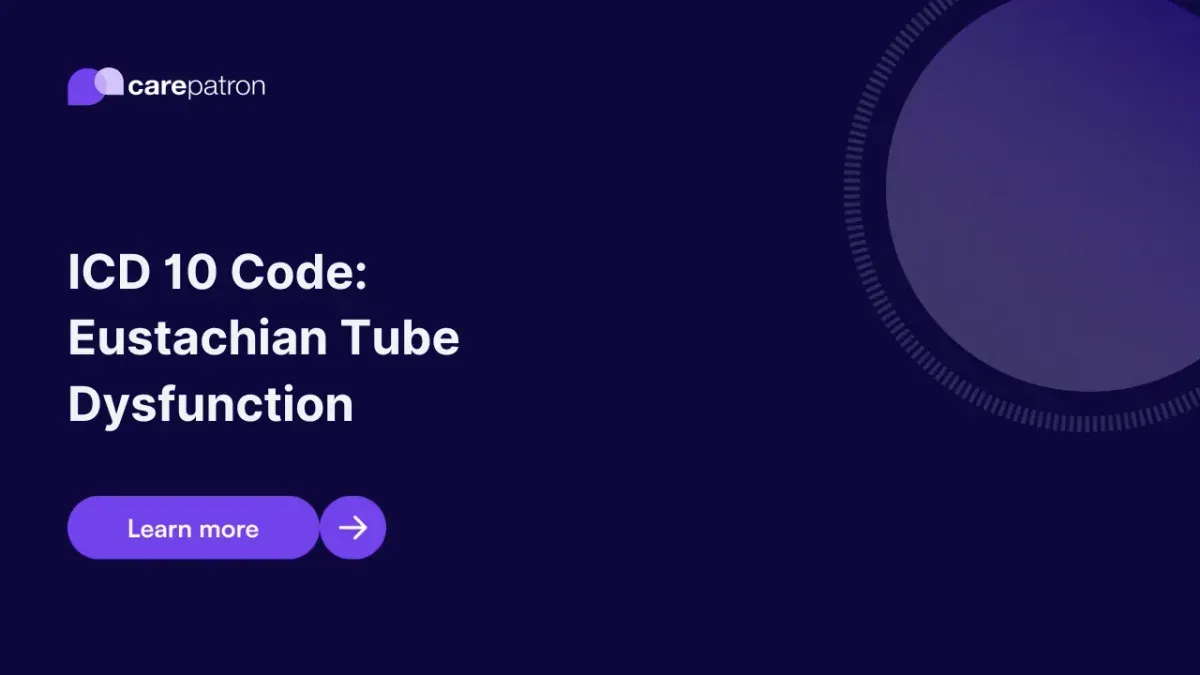
Eustachian Tube Dysfunction
Learn about the eustachian tube dysfunction ICD-10-CM codes you can use through this guide.
Use Code
Commonly asked questions
Various factors, including allergies, respiratory infections, sinus infections, and changes in altitude or pressure, can cause eustachian tube dysfunction.
Diagnosis of eustachian tube dysfunction typically involves a physical examination of the ear and tests like tympanometry to assess the pressure and fluid status in the middle ear.
Treatment options for eustachian tube dysfunction may include medications like decongestants and antihistamines, and surgical interventions like tube insertion in the eardrum for chronic or severe cases.
EHR and practice management software
Get started for free
*No credit card required
Free
$0/usd
Unlimited clients
Telehealth
1GB of storage
Client portal text
Automated billing and online payments
